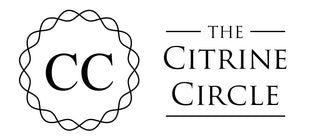Opal is technically not a crystal as it is amorphous - it does not have a defined crystal structure. It is a hydrated form of Silicon Dioxide - basically Quartz with added water! As the water content can vary depending on the opal, this means it does not have a fixed chemical composition either. These two things make it a mineraloid rather than a mineral - amber and obsidian are two other famous non-crystal ‘mineraloids’. The colour comes from the tiny Silica spheres that make up the crystal, and they have to be arranged in a certain way and be a certain size to create the colour flashes.
There are three main categories of Opal – common, fire and precious. Common opal comes in a variety of colours such as greens, pinks, blues and white but does not display any flash or “play of colour”. Precious Opal is typically black or white and is graded on the colour flash displayed. The most desired precious Opal comes from Australia and can fetch thousands of dollars per carat, whilst other famous localities include Ethiopian Welo Opal, Oregon, Mexico and Virgin Valley. Fire Opal has a bright yellow, orange or red background, not to be confused with the play of colour precious opal often referred to as having ‘fire’.
Arabian legends believe that Opals fell from the heavens in flashes of lightning, whereas the Greeks believed they were the tears of Zeus after he won a battle against the Titans.The Aborigines believed that Opals were in fact their creator god, the Rainbow Serpent, and the Indians believe Opal was their Goddess of Rainbows, who turned herself into the gem in order to escape the unwanted advances of the other gods.
Many ancient cultures believed that Opals gave the gift of foresight, and all of them prized it as a lucky gem.
There is a long standing myth about Opal being unlucky to wear unless it's your birthstone, and various superstitions in Elizabethan England supported this, although it is thought that most of the damage to opal's reputation came from diamond traders. When Australian Opals appeared on the market, the diamond cartels, mainly DeBeers, felt threatened by this beautiful new crystal and actively spread the rumours that opals were bad luck, so as to try and dissuade people from buying them.
Opal Metaphysical Properties include:
- Provides emotional and mental balance
- Helps communication with other realms
- Aids in connecting with spirit and animal guides
- Boosts spiritual development
- Brings stability
Find our Opal collection here.
ETHIOPIAN OPAL
A lot of Ethiopian Welo Opal has a much larger water content than most other opals, and will actually absorb water, causing it to change in appearance and become much clearer. This is known as Hydrophane, and the absorption and drying out is a gradual process rather than an instant one. They are generally found in much larger sizes than any other precious opals. Opals should avoid contact with lotion, hair dye, moisturizers and oil, as this may change their appearance.
MEXICAN FIRE OPAL
Much Mexican Fire opal does not have play of colour, but when it does then they make beautiful specimens, ones with no colour play are sometimes referred to as ‘jelly opals’. Mexican Fire Opal is usually found in a Rhyolite matrix, with Queretaro being the largest producer of fire opal. There is another type of desirable opal that can be found in Mexico, known as Mexican Water Opal - this does not have the brightly coloured base colour, but is more transparent with blue or gold internal flashes.
SPENCER OPAL
Spencer in Idaho is sometimes known by the name “Opal Capital of America”, and the family owned mine produces the largest amount of opal in the state, and you can actually go and dig your own! The mine has also been known to produce exceptionally rare Star Opal, a phenomenon shared by Star Rose Quartz and Sapphire.
ANDAMOOKA
Andamooka is an Australian opal discovered in the 1930s in Andamooka in South Australia, not too far from Coober Pedy, and is one of the oldest Australian opal fields. Queen Elizabeth II has a 203 carat Andamooka Opal necklace as part of her crown jewels that was presented to her on her first state visit in 1954. Most Andamooka Opal has very pale limestone matrix naturally, so you cannot see the colour well. They treat it with a glucose and lactose solution, which is then heated and then burnt off, also known as “sugar treatment”, to darken the matrix around the opal so that the opal flashes stand out against the dark background. The opal itself is left unaffected, only the matrix around it changes.
CREATION STORY:
An Aboriginal creation story from Andamooka tells us how their great ancestor came to Earth on a mighty rainbow to instruct them on how to build their society, and the laws and practises they should obey, before ascending once more into the sky. Where the rainbow had rested, rocks and pebbles of all colours lay there, which glittered in the sunlight and became the first opals. These opals were sacred, and kept to be used in ceremonies in the belief that the rainbow would appear again one day.
MINTABIE
Mintabie was the biggest Opal producing field in Australia in the 1980s, and it is located around 300km north of Coober Pedy. They vary in colour greatly, from sparkling whites to intense blue/blacks, and the fields are actually located on Aboriginal freehold land, making it very difficult to access to mine, and the settlers leases for the town of Minabie were revoked, and it was closed down and finally evicted on December 31st 2019.
LIGHTNING RIDGE
Lightning Ridge is one of the most famous Australian Opal fields, the precious black opal they produce is one of the rarest and most desired gems in the world. They even have an opal festival every year, this year is at the end of July into August. Australia produces around 90% of the worlds opals, from famous opal fields including Lightning Ridge, Coober Pedy and more. Most Australian Opal was formed in rocks from the Cretaceaous period (145-60 million years ago), when much of Australia was covered by an inland sea. Towards the end of this period, the sea continually receded and refilled, depositing lots of silica rich sand on the shorelines. Cracks in the ground then allowed silica rich solution to flow into the ground, and this is how opals came about. Decomposing plants and animals were also gradually replaced by these silica solutions, and so opalised fossils can be found - a similar story to the opal pine cones etc that are found in Virgin Valley, Nevada. It is estimated that it can take around 5 million years to form a 1cm thick opal vein.
CREATION STORY:
The tribe around Wallangulla, better known to opal lovers as Lightning Ridge, centre their opal creation story around a crocodile called Gurria. Their supreme Creator spirit Bhiamie and his two wives were out swimming in an outback creek, unaware that Gurria was following them. Unprepared, Gurria managed to swallow both women and tried to escape by swimming away down the Narran River. Angered, Bhiamie followed him to a lake and eventually managed to injure him, spearing him, and in his anguish his squirming created two great lakes - one by his tail, Coocoran Lake, and one by his head, Angeldool Lake. As the great crocodile lay dying, it began to rain, and a rainbow appeared, becoming trapped in Gurria’s scales, and so forming the first opals in the ground. Bhiamie managed to free his wives from Gurria’s body, and brought them back to life with the help of a tiny black ant called Ghee-jar.
GREEN OPAL
This green Opal from Madagascar is known as a Common Opal due to it’s lack of play of colour. It is also known as Apple Opal, and is easy to shape into palmstones, freeforms and other shapes.
HONDURAN OPAL
Honduran Opal was primarily formed during volcanic eruptions in the country of Honduras in Central America, between Nicaragua and Guatemala. They are the oldest opal mines in the world, and a lot of Hunduran farmers actually subsidise their income by mining opal!. Honduran Opal is similar to the Andamooka Opal in it’s appearance and composition - opal within a matrix, in this case volcanic black basalt. These opals are often coated in resin or similar to seal the stone and stop it absorbing anything else, and to show off the colour.
BOULDER OPAL
Boulder Opal is formed when silica rich solutions flow into cracks in ironstone. Much of this comes from Quilpie in Australia, although light coloured matrix Boulder opal from Andamooka is known as Painted Lady.
DURANGO/ITZAYANA BLUE OPAL
The area of Durango in Mexico has very recently started producing some stunning blue Opal, to rival the hard to find Owyhee Blue Opal.
ICECREAM OPAL
This gorgeous soft pinky white blend is another Common Opal from Idaho, affectionately known as Icecream Opal.
OREGON OPAL
Opal Butte in Murrow, Central Oregon has produced some incredible examples of Opal, many of which appear to have little worlds trapped inside them. These opals are found inside Rhyolite Geodes, also known as thundereggs as these are solid. Commercial mining began in 1988, despite the deposits being known about since the 1800s, and gems as large as 315 carats have been produced. However they are rare, only 1 in 10 opals found are gem quality, and only 1% have play of colour inside the opal.
OWYHEE OPAL
Owyhee Opal is another Oregon find, but this opal is known as a ‘common opal’ as it has no play of colour, but is instead a wonderful calming pastel blue colour. When it is first mined out of the ground it is transparent, but as the water content evaporates on contact with air it becomes opaque, taking on the pastel blue hue.
AMMOLITE
This is not an opal, but in fact is made from the fossilised shells of Ammonites that lived around the Rocky Mountains in north America/Canada. It is an extremely hard material to find, and even harder to cut and polish. Blues and purples are the rarest and most desirable, as they are the outer layers of the shell that are the most prone to decomposition and wear.
HYALITE OPAL
Hyalite Opal is also known as Muller’s Glass, after it’s discoverer Franz-Joseph Muller von Richenstein, or Water Opal. This material comes from Namibia, and exhibits an exceptionally bright glow under UV light. Faceted Hyalite gems are incredible under UV light, and have been likened to being real life Kryptonite!

